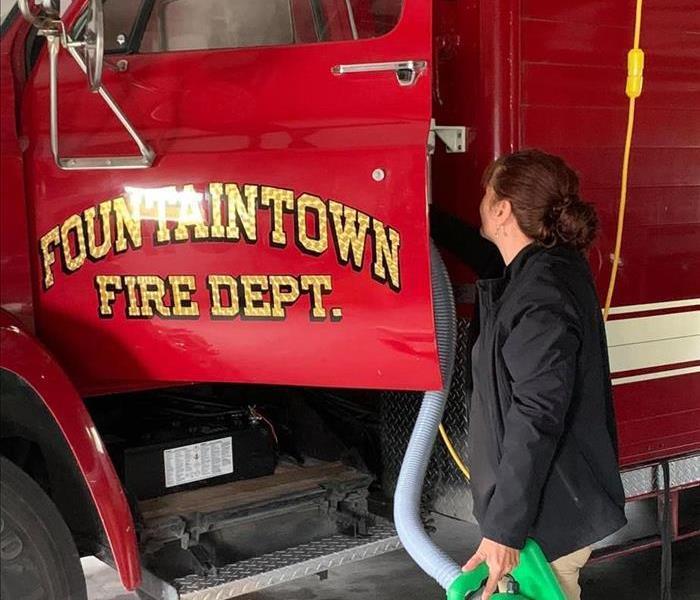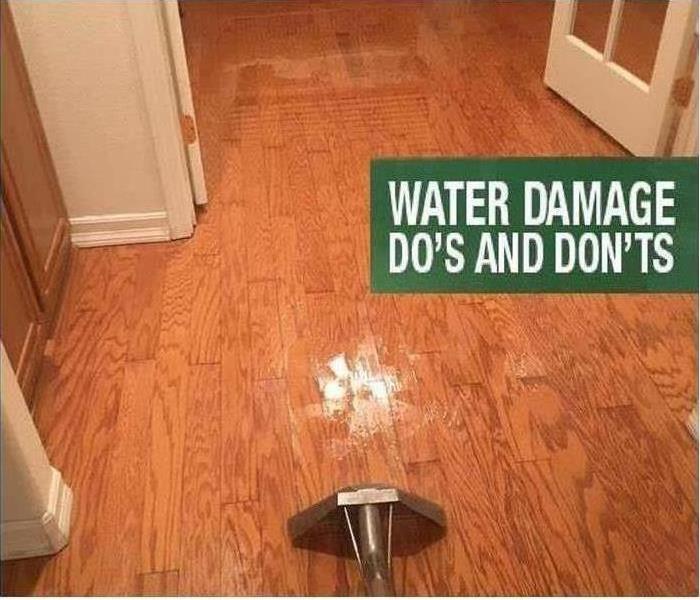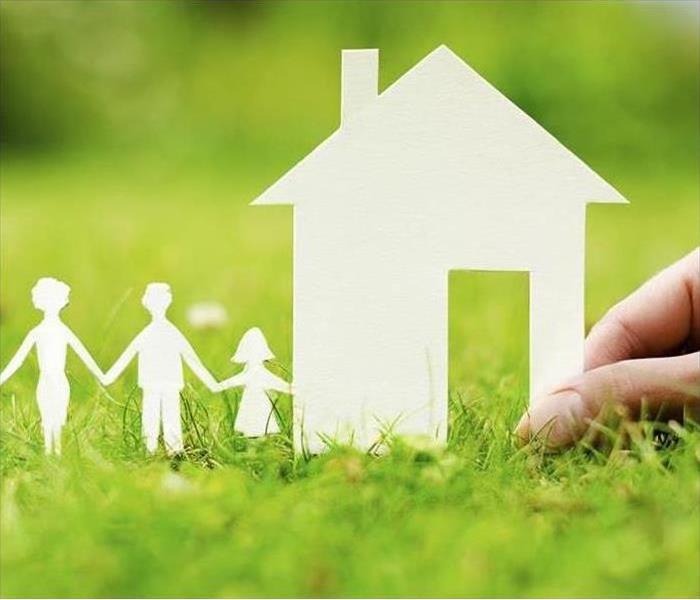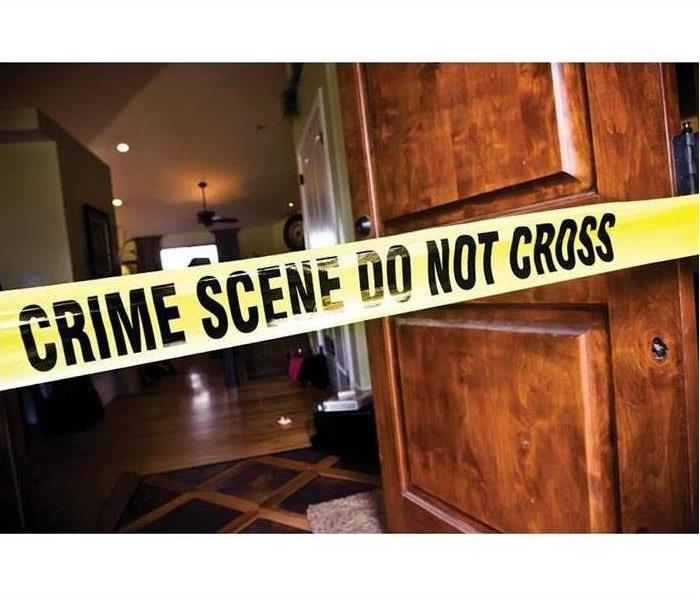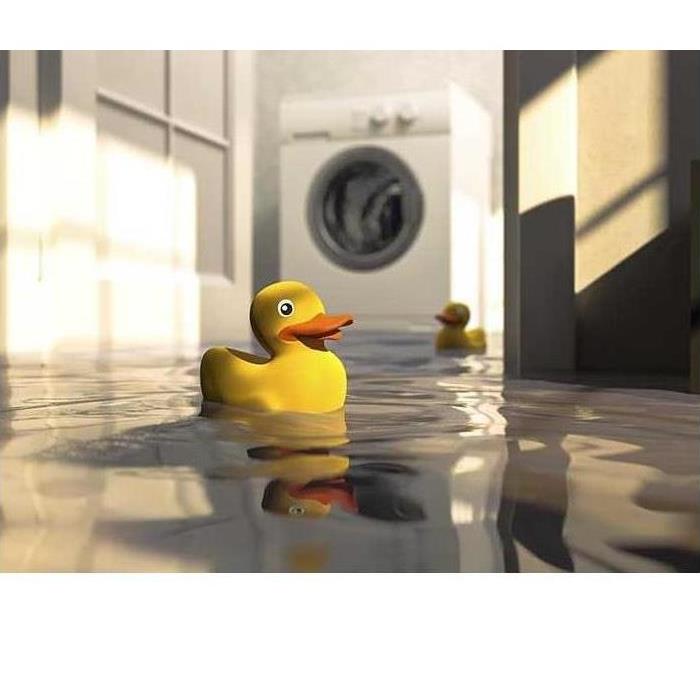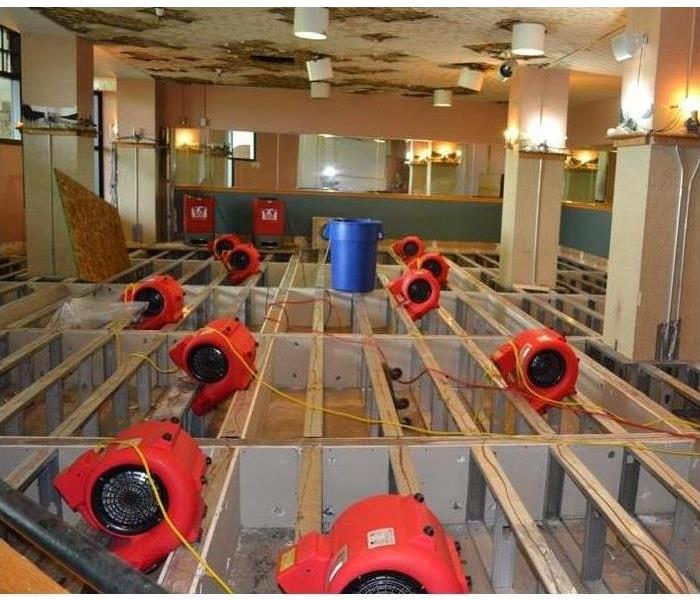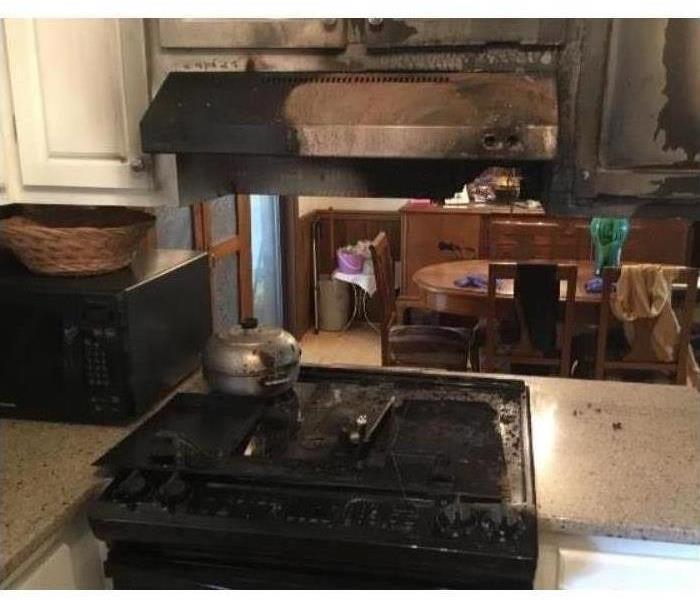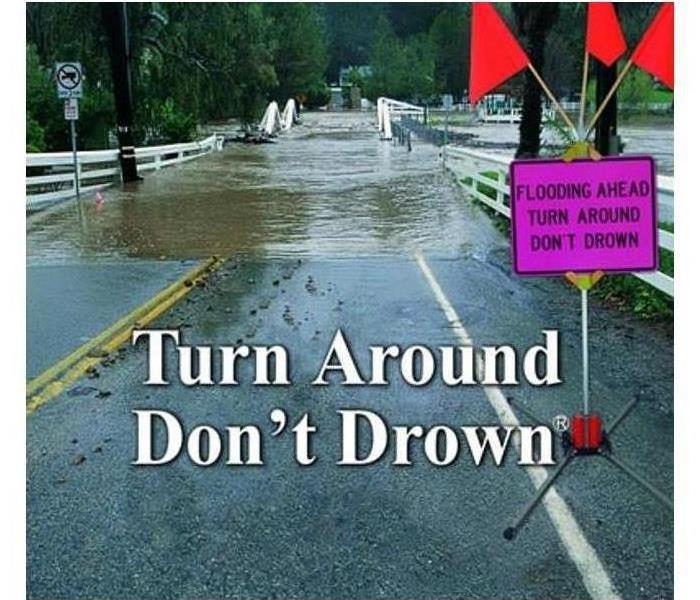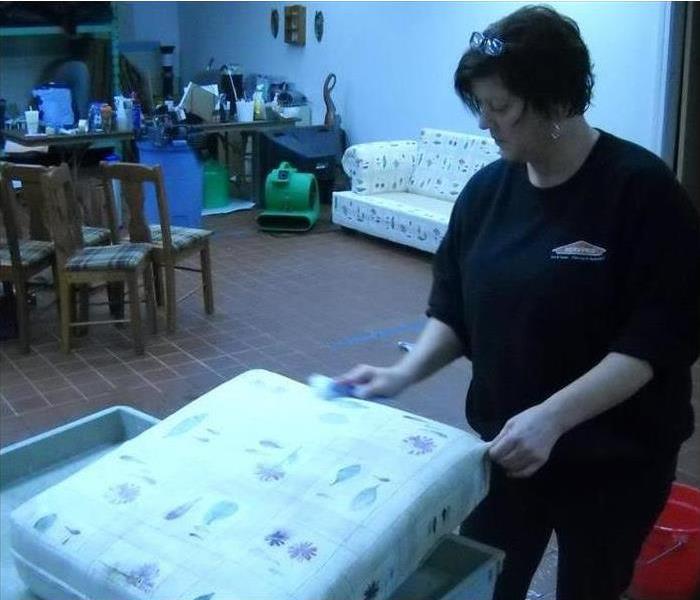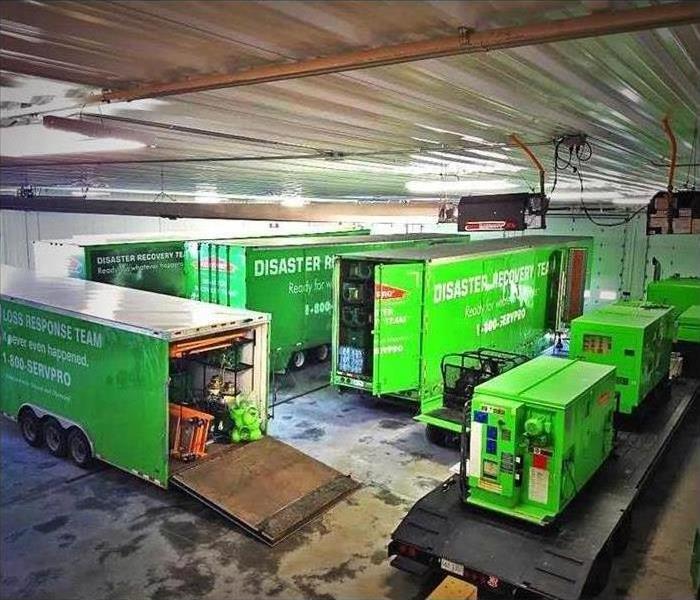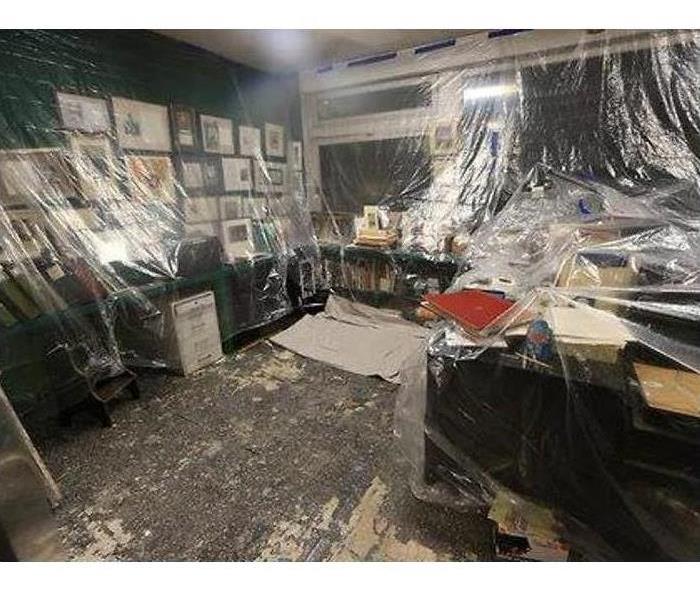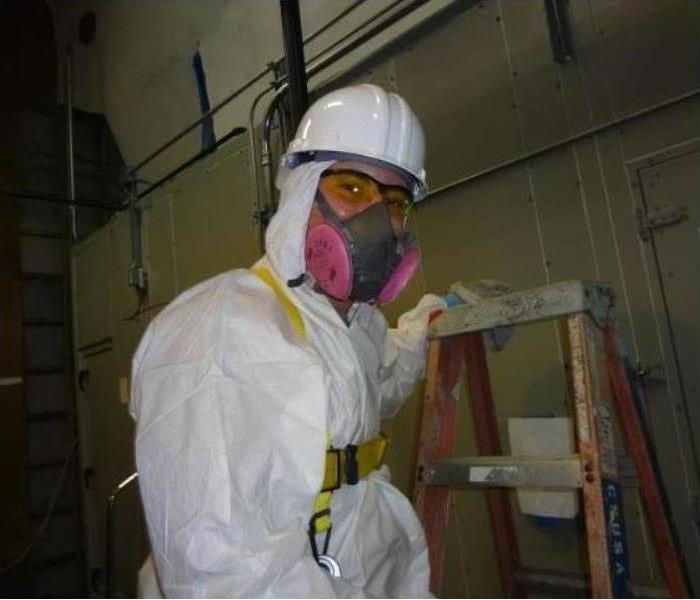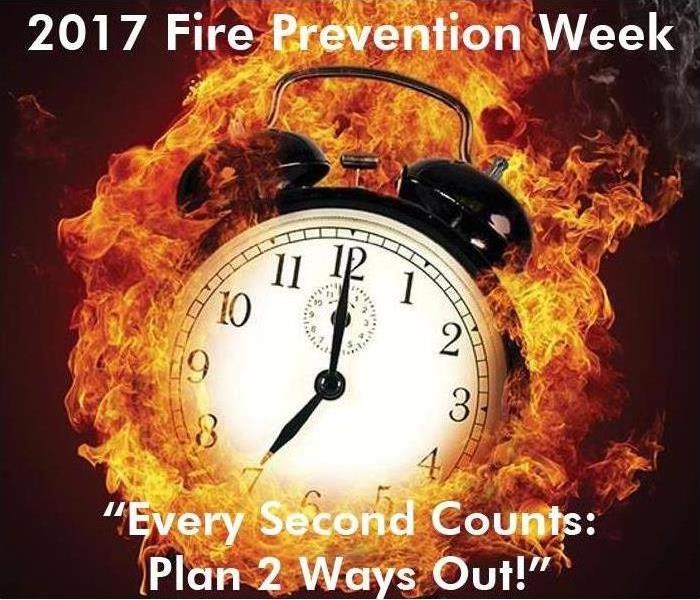Archived Blog Posts
Tornado watch or warning? Here is what you need to know!
3/28/2022 (Permalink)
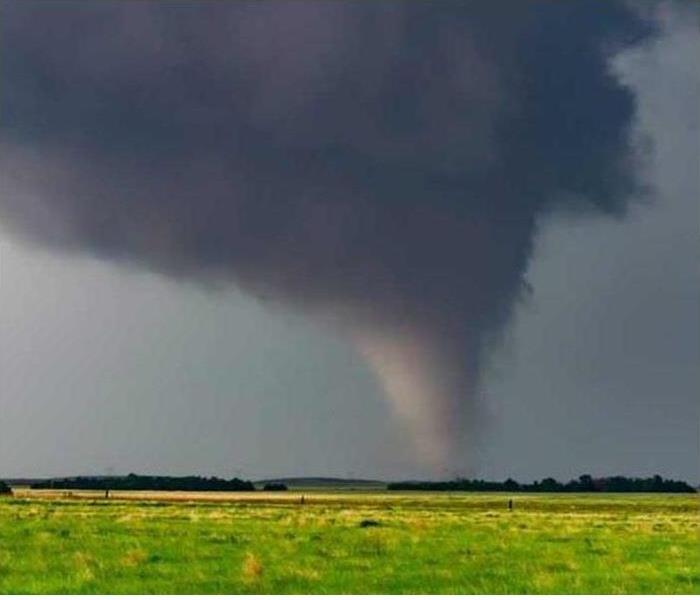 Do you know the difference between a tornado watch and a warning?
Do you know the difference between a tornado watch and a warning?
Tornadoes are violent: they can completely destroy well-made structures, uproot trees and hurl objects through the air like deadly missiles. Although severe tornadoes are most common in the Plains States, they can happen anywhere. Learn what to do to keep your loved ones safe.
Top Tips
- Identify a safe place in your home where household members and pets will gather during a tornado: a basement, storm cellar or an interior room on the lowest floor with no windows.
- In a high-rise building, pick a hallway in the center of the building. You may not have enough time to go to the lowest floor.
- In a mobile home, choose a safe place in a nearby sturdy building. If your mobile home park has a designated shelter, make it your safe place. No mobile home, however it is configured, is safe in a tornado.
Know the difference
A tornado WATCH means a tornado is possible.
A tornado WARNING means a tornado is already occurring or will occur soon. GO TO YOUR SAFE PLACE IMMEDIATELY.
After the storm if you do nothing else:
- Let friends and family know you’re safe. - Register yourself as safe on the Safe and Well website
If evacuated, return only when authorities say it is safe to do so.
- Continue listening to local news or a NOAA Weather Radio for updated information and instructions.
- Check for injuries. If you are trained, provide first aid to persons in need until emergency responders arrive.
Can Spring Cleaning Prevent Fires? It Sure CAN!
3/28/2022 (Permalink)
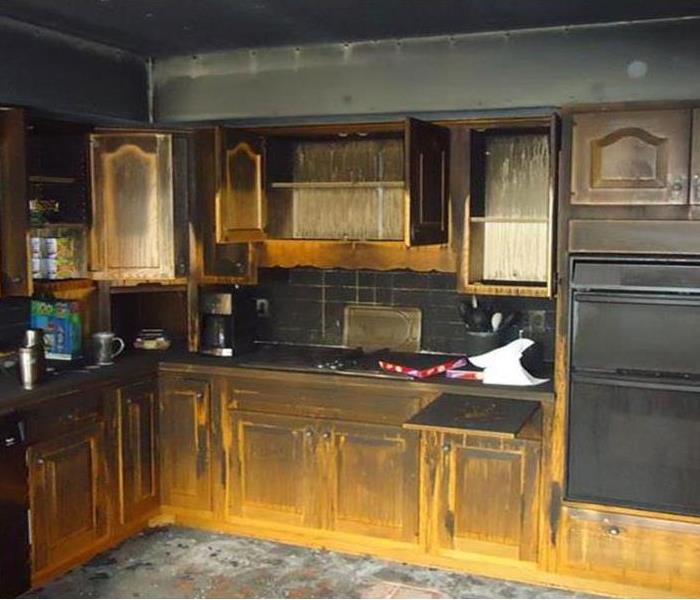 Follow these cleaning tips to help reduce the risk!
Follow these cleaning tips to help reduce the risk!
With the arrival of spring comes blue skies, blooming flowers and spring cleaning. This is the perfect time for a refresher on fire safety tips that should be followed year-round. Keeping fire safety in mind when doing things around the house will help prevent fires.
First and foremost, check your smoke alarms. It’s a task that can easily go forgotten for months, but how convenient that you should change your battery once a year and spring cleaning comes around once a year. Put it on your list of chores for the big clean to ensure that it happens every 12 months. According to the NFPA, a functioning smoke alarm in your home cuts your risk of dying in a house fire by 50 percent.
The leading cause of dryer fires is the failure to clean them. Clean the lint filter before and after each load of laundry. Also, be sure to clean the lint that may have collected around the drum and the dryer vent. Keep the area around your dryer clear of things that can burn like boxes, cleaning supplies, and clothing.
Check your electrical cords to make sure that they are not running across doorways or under carpets. Extension cords are intended for temporary use. If you are in need of extension cords, have a qualified electrician to install additional receptacle outlets.
Clean your garage of stored newspapers or other rubbish that can fuel a fire. Properly store household chemicals in an approved container and never mix cleaning agents.
Check and clean filters above stove. Pull refrigerator out and vacuum or dust the coils.
Add these to your spring cleaning list to help reduce the risk of fires in your home
Thunderstorm 101
3/27/2022 (Permalink)
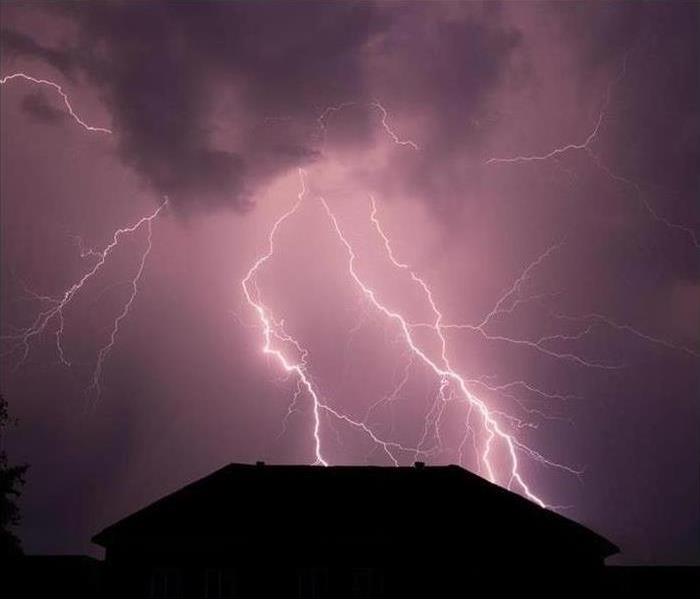 If a thunderstorm causes severe damage to your home, call us at 919-751-5353
If a thunderstorm causes severe damage to your home, call us at 919-751-5353
What is a thunderstorm? A thunderstorm is a rain shower during which you hear thunder. Since thunder comes from lightning, all thunderstorms have lightning.
Why do I sometimes hear meteorologists use the word “convection” when talking about thunderstorms? Usually created by surface heating, convection is upward atmospheric motion that transports whatever is in the air along with it—especially any moisture available in the air. A thunderstorm is the result of convection.
What is a severe thunderstorm? A thunderstorm is classified as “severe” when it contains one or more of the following: hail one inch or greater, winds gusting in excess of 50 knots (57.5 mph), or a tornado.
How many thunderstorms are there? Worldwide, there are an estimated 16 million thunderstorms each year, and at any given moment, there are roughly 2,000 thunderstorms in progress. There are about 100,000 thunderstorms each year in the U.S. alone. About 10% of these reach severe levels.
When are thunderstorms most likely? Thunderstorms are most likely in the spring and summer months and during the afternoon and evening hours, but they can occur year-round and at all hours.
Thunderstorms frequently occur in the late afternoon and at night in the Plains states. What kinds of damage can thunderstorms cause? Many hazardous weather events are associated with thunderstorms. Under the right conditions, rainfall from thunderstorms causes flash flooding, killing more people each year than hurricanes, tornadoes or lightning. Lightning is responsible for many fires around the world each year, and causes fatalities. Hail up to the size of softballs damages cars and windows, and kills livestock caught out in the open. Strong (up to more than 120 mph) straight-line winds associated with thunderstorms knock down trees, power lines and mobile homes. Tornadoes (with winds up to about 300 mph) can destroy all but the best-built man-made structures.
Where are severe thunderstorms most common? The greatest severe weather threat in the U.S. extends from Texas to southern Minnesota. But, no place in the United States is completely safe from the threat of severe weather.
FASTER to Water Damage
3/26/2022 (Permalink)
SERVPRO of Wayne County provides 24/7 water damage restoration service in the Wayne County area. Flooding and water emergencies do not wait for regular business hours and neither do we. SERVPRO of Wayne County provides emergency cleaning and restoration services 24 hours a day, 7 days a week—including all holidays. Faster To Any Size Disaster!
Flooding and water damage is very invasive. Water quickly spreads throughout your home and gets absorbed into floors, walls, furniture, and more. SERVPRO of Wayne County arrives quickly and starts the water extraction process almost immediately. This immediate response helps to minimize the damage and the cleaning and restoration costs.
Need Emergency Service? Call Us 24/7 – (919)751-5353
Water Damage Timeline:
Within Minutes-
Water quickly spreads throughout your property, saturating everything in its path. Water is absorbed into walls, floors, upholstery, and belongings.
Furniture finishes may bleed, causing permanent staining on carpets. Photographs, books, and other paper goods start to swell and warp.
Hours 1 - 24:
Drywall begins to swell and break down.
Metal surfaces begin to tarnish.
Furniture begins to swell and crack.
Dyes and inks from cloth and paper goods spread and stain.
A musty odor appears.
48 Hours to 1 Week:
Mold and mildew may grow and spread. Doors, windows, and studs swell and warp. Metal begins to rust and corrode.
Furniture warps and shows signs of mold. Paint begins to blister.
Wood flooring swells and warps.
Serious biohazard contamination is possible.
More Than 1 Week:
Restoration time and cost increase dramatically; replacing contaminated materials and structural rebuilding may be extensive. Structural safety, mold growth, and biohazard contaminants pose serious risks to occupants.
SERVPRO of Wayne County specializes in the cleanup and restoration of residential and commercial property after a fire, smoke or water damage event. Our staff is highly trained in property damage restoration. From initial and ongoing training at SERVPRO’s corporate training facility to regular IICRC-industry certification, rest assured our staff is equipped with the knowledge to restore your property.
5 Tips to prevent water damage
3/21/2022 (Permalink)
Most Homeowners insurance policies cover basic water damage claims up to the purchased limit.
But you know what’s a lot easier than going through the claims process? Preventing the water damage in the first place!
Check out these 5 suggestions for preventing water damage:
1. Be careful where you plant
Some plants and trees, like weeping willows, have pretty invasive roots. If you’re not careful, they’ll grow right into your sprinkler system, drainage field, pipes, and septic tanks. Plan before you plant to keep roots away from any water lines.
2. Clean out roof gutters
You know it’s on your to-do list anyway, so if you can, take a safe climb up to your roof next Sunday and check out your gutters. If you’re seeing lots of leaves, birds’ nests, sticks, and whatnot up there, your gutters may not be doing the job you hired them for. And on a rainy day, a clogged gutter can send water spilling into your home’s foundation, through the roof, or down to your basement. That could cause some serious water damage! So next time you’re doing some seasonal cleaning, make sure those gutters are clean. And if your gutters are too high, be safe and get a professional to check them.
3. Keep an eye on your water bill
With so many water pipes hidden behind walls and in the floors in your house, you might not know there’s a leak until the damage is done. That’s why it’s a good idea to keep a close eye on your monthly water bill. If you see it starting to creep up, or get one that’s uncommonly high, it’s a pretty good sign that you may have a leak somewhere.
4. Use a drain snake instead of unclogging chemicals
No matter how crazy clean you are, from your shower to your kitchen sink, clogs are going to happen. And chances are at some point in your life you’ve used one of those powerful chemical drain cleaners to get things moving again. But as convenient as they may be, most folks don’t realize those caustic chemicals are also eating away at their pipes (and they might not be too good for you either). If you rely on them a lot, you could be setting yourself up for leaks. That’s why owning a drain snake is a good solution to clear away clogs. They’re pretty inexpensive, you can get them at your local hardware store, and they can cut through most any clog you’ll have without damaging pipes or making your eyes red and teary.
5. Never pour grease down your sink
You’ve probably heard this before, but you should definitely avoid pouring grease down your kitchen sink. It doesn’t matter if you flush it with hot or cold water. It can still congeal and cling to your pipes, and could still cause some serious damage and blockage.
Some people use detergent to break up grease before pouring it down the drain…and that may help sometimes. But there’s no guarantee that it’ll keep the grease from sticking to your pipes, so why take the risk?
The safest thing to do is just to pour your grease in an empty can, and either let it sit or put it in the refrigerator. Once it hardens you can toss it in the trash and get rid of it. Done and done.
What is in your storm safety kit?
3/21/2022 (Permalink)
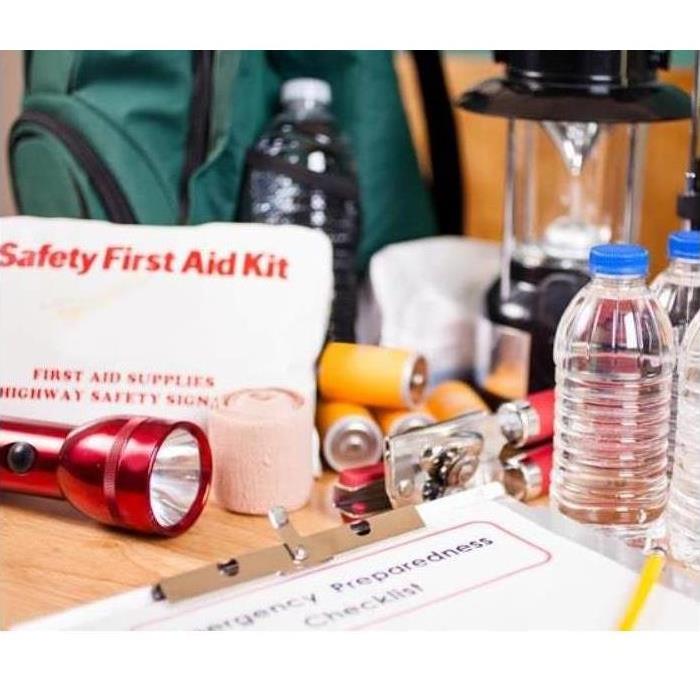 Being prepared for a storm is important in making sure your family has what they need in the event of a disaster
Being prepared for a storm is important in making sure your family has what they need in the event of a disaster
Here is what federal authorities recommend for a basic kit that last three days, but you should tailor yours to your family's needs, especially if you have small children.
- One gallon of water per person per day, for drinking and sanitation;
- Non-perishable food and a manual can opener;
- A battery-powered or hand crank radio and a NOAA weather radio with tone alert and extra batteries;
- Flashlight and extra batteries;>
- First aid kit;
- Whistle to signal for help;
- Filter mask or cotton t-shirt, to help filter the air;
- Moist towelettes, garbage bags and plastic ties for personal sanitation;
- Wrench or pliers to turn off utilities;
- Plastic sheeting and duct tape to shelter-in-place;
- Important family documents in a waterproof container;
- Items for unique family needs, such as daily prescription medications, infant formula or diapers
For more information on emergency readiness kits, visit www.redcross.org
Document Restoration
1/5/2022 (Permalink)
When disaster strikes, some of your most valued contents—documents, photographs, and books—could be lost forever. As a leader in the restoration industry, SERVPRO knows that timely mitigation is the key to recovering damaged possessions. With years of experience and state-of-the-art technology, SERVPRO’s restoration professionals will help you recover your paper goods before it is too late.
Our Document Restoration Facility:
- Innovative: we use the latest vacuum freeze-drying method, as well as gamma irradiation technology for sterilizing
- Secure: managed by HIPPA Master-certified technicians, under 24/7 surveillance
- Digital: we use a computerized inventory system for digitizing your documents
- Flexible capacity - we can accommodate large commercial losses or small residential jobs
- Full Service: we offer a range of services including drying, cleaning/disinfecting, re-jacketing, digitizing, and deodorization
Need your valuable documents restored? Call Today 919-751-5353
Our Technology
Then SERVPRO document restoration team uses innovate vacuum freeze-drying techniques; in fact, we use the same freeze-drying methods used by the Library of Congress to dry valuable historic documents and books. Our vacuum freeze-drying process is the only method approved by the National Archives and Records Administration (NARA) and the General Services Administration (GSA).
Types of content:
- paper documents
- books and magazines
- manuscripts and files
- photographs, films, negatives, and microfiche
- x-rays
- blueprints and maps
- parchment
Document Cleaning and Disinfecting
In many water damage situations, like sewage or flood water, documents will be exposed to bacteria, viruses, pesticides, or other harmful chemicals. Our team uses a gamma irradiation process to safely and effectively sterilize your documents.
Digitizing Services
In the digital age, converting your paper files and photos to digital formats can have an invaluable impact on your business or home. With the help of SERVPRO’s restoration professionals to digitize your documents, you can save storage space and have access to your records at the touch of a button. And perhaps most important of all, you’ll have digital copies of your valuable documents that can’t be lost in a flood or fire.
Understanding Mold
11/21/2021 (Permalink)
Confusion and misunderstanding surround the topic of mold and mold remediation. Some restoration businesses even make claims to remove all mold from a building. This is impossible really. Mold spores occur naturally almost everywhere, both indoors and outdoors. These microscopic spores float along in the air and can enter a home or business through windows and HVAC systems. Consider these facts:
- Mold is present almost everywhere, indoors and outdoors.
- Mold spores are microscopic and float along in the air and may enter your home through windows, doors, or AC/heating systems or even hitch a ride indoors on your clothing or a pet.
- Mold spores thrive on moisture. Mold spores can quickly grow into colonies when exposed to water. These colonies may produce health effects.
- Before mold remediation can begin, any sources of water or moisture must be addressed. Otherwise, the mold may return.
- Mold often produces a strong, musty odor and can lead you to possible mold problem areas.
- Even higher-than-normal indoor humidity can support mold growth. Keep indoor humidity below 45 percent.
If you suspect mold in your home, call us at 919-751-5353 for an inspection.
Sewage back ups and what you need to know
11/20/2021 (Permalink)
It usually begins with a gurgling... or a slow drain. If you notice either, your number may be up. When confined to a single drain, you probably don't have anything to worry about - break out the plunger or pull out that hair clump. But if the tub is backing up when the toilet's flushed, or the kitchen sink appears to drain straight to your basement, you could have a major problem. The sewer drain could be backing into your building drain.
Did you know...
- The most common causes of sewer backups are tree roots clogging pipes, FOG (Fats, Oils, and Grease) going down the drain, and connecting things like french drains, sump pump discharges, and other flood control systems to the sanitary sewer system (which is why such connections are usually not permitted). Blockages in main sewer lines can also be caused by soil settlement over time or collapsed pipes.
- "Flushable" wipes aren't so flushable: utilities around the country have found them to be the chief culprit in many a clogged main sewer drain. Trash them!
- Municipalities with combined sewage and storm water systems are at a higher risk of being inundated by severe rainfall, resulting in backups.
Sewage backups can put you in a messy situation but we can take care it quickly! If you suffer a sewage back up, call 919-751-5353 for a quick response and we will make it "Like it never even happened."
We ARE the CLEANING EXPERTS
11/19/2021 (Permalink)
During this unprecedented time caused by the global pandemic of coronavirus, this is a reminder to our customers that we are specialists in cleaning services, and we adhere to the highest cleaning and sanitation standards.
Specialized Training
We are prepared to clean and disinfect your home or business, according to protocols set forth by the Centers for Disease Control and Prevention. We have years of experience in dealing with biological contaminants, and we will go beyond the scope of work that regular janitorial staff perform on a daily basis.
The CDC encourages cleaning of high-touch surfaces such as counters, tabletops, doorknobs, light switches, bathroom fixtures, toilets, phones, keyboards, tablets and tables. Other spaces mentioned in the CDC’s guidance for commercial spaces include:
- Kitchen/Food Areas
- Bathrooms
- Schools/Classrooms
- Offices
- Retail Spaces
- Water Fountains
- Shelving/Racks
- Sales Counters
- Carpets and Rugs
- Stair Handrails
- Elevator Cars
- Playground Equipment
- Fitness Equipment
Specialized Products
The CDC recommends usage of a labeled hospital-grade disinfectant with claims against similar pathogens to the coronavirus. Multiple products in the SERVPRO product line carry the EPA-approved emerging pathogens claims. While there is currently no product tested against this particular strain of the coronavirus, we are following all guidelines as provided by the CDC and local authorities.
Call Today for a Proactive Cleaning
If your home or business needs deep cleaning services, call the experts today – 919-751-5353
Water Damage? Here is a list of Dos and Don'ts
11/19/2021 (Permalink)
Do
- Remove as much water as possible by mopping and blotting the saturated area.
- Wipe furniture to remove excess water.
- Place aluminum foil between furniture legs and wet carpet.
- Prop up wet furniture cushions for even drying.
- Lift drapes off flooring, loop through a coat hanger and hang on curtain rod.
- Remove wet area rugs.
- Turn on air conditioner if damage occurs in summer.
- Move valuable paintings, art objects, and photos to a safe, dry place.
- Open closet doors, furniture drawers, and luggage to aid in drying.
- Remove any wet fabrics and dry immediately.
- Hang furs and leather goods to dry separately at room temperature.
- Stay out of any rooms where the ceiling is sagging from trapped water.
Don't
- Use your household vacuum to remove the excess water.
- Use electrical appliances while standing on wet flooring or carpets.
- Wait to call for professional help. The longer you wait, the more damage will occur.
If you suffer a water loss remember, our technicians are on call 24/7, 365 for you!
Five ways to protect the air quality in your home
11/15/2021 (Permalink)
The quality of your indoor air is important. Follow these tips and help keep the air inside your home clean for you and your family.
1. Proper filters-proper filters can help by capturing airborne allergens such as pollen, mold spores, dust mites, and pet dander
2. Removing your shoes at the door. Your shoes are covered in a fine layer of chemicals, dirt and bacteria.
3. Fireplaces. Be sure your fireplace flue is inspected by by a professional and be sure it is working properly. This will help keep those particles out of the air.
4. Bathroom fans. When you shower or use hot water in the bathroom, be sure to use bathroom fans to vent out the steam and extra moisture that could cause mold and mildew growth.
5. Clean your ducts. Having your ducts cleaned by a licensed professional can reduce the dirt, mold spores and bacteria from being spread throughout your home. If you would like your ducts cleaned, just give us a call at 919-751-5353 for a free estimate!
Biohazards and Crime Scenes and what you need to know
11/15/2021 (Permalink)
Due to its uncomfortable nature, trauma scene cleanup is a topic that is rarely considered until something happens. Once the need is necessary, it is generally accompanied by a high level of emotional distress, which is compounded by the fact that most people have no idea what options they have.
That's where the Trauma Scene and Biohazard experts at SERVPRO of Wayne County come in. SERVPRO of Wayne County has been providing trauma scene cleaning services in Wayne County for over 20 years. SERVPRO production managers and our production team are highly trained in this area. This training allows them to provide the highest level of technical expertise and professional service.
SERVPRO of Wayne County sincerely hopes that no-one ever has to deal with a trauma scene situation. But, we take pride in knowing that, if the unthinkable happens, we are always here to help.
What is water damage restoration?
11/15/2021 (Permalink)
Water Damage Restoration
Water damage refers to the destructive processes that result when water intrudes into a building and its components. Examples of water damage include rotting wood, oxidation of metal (rust), microbial growth, and de-lamination of composite building materials. Once water seeps into building materials such as wood, dry wall, or masonry, a natural chemical reaction starts to occur, breaking down the integrity of the material. If left unaddressed, water damage can cause the stability of a structure to be compromised, making it unsafe for human occupancy. In addition, grey water, or water that contains significant chemical, biological, or physical elements, may quickly become hazardous to human exposure as microbes and other contaminants begin to grow to dangerous levels when water has been standing in excess of 48-72 hours.
Many highly contagious illnesses are connected to water damage including skin infections, hepatitis A, salmonella, eye infections, respiratory infections, and Weil’s disease, as well as liver, blood, and kidney issues.
Water Damage Restoration Solutions
The first step in water damage restoration is emergency mitigation. This includes locating the source of and eliminating the influx of intruding water, as well as an assessment of the damage and danger to humans. These services should only be performed by trained, licensed flood restoration professionals.
Once the damage and health effects have been assessed, drying and dehumidification services should be performed on all affected areas. A quick assessment of equipment, documents, and other items can determine whether or not contents restoration is possible or necessary. In addition, mold remediation services can minimize the long-term health effects of microbial growth associated with water damage.
Once your structure is deemed safe for human occupation, temporary power and HVAC services can get your business back online and back to work, minimizing business interruption.
If you suspect MOLD, follow these helpful tips!!
8/2/2021 (Permalink)
If you see visible mold, do not disturb it. You can inadvertently spread the mold infestation throughout your home. When mold is disturbed, the mold can release microscopic mold spores which become airborne and can circulate inside your home.
What to Do:
- Stay out of affected areas.
- Turn off the HVAC system and fans.
- Contact SERVPRO of Wayne County for mold remediation services.
What Not to Do:
- Don’t touch or disturb the mold.
- Don’t blow air across any surfaces with visible or suspected mold growth.
- Don’t attempt to dry the area yourself.
- Don’t spray bleach or other disinfectants on the mold.
About Our Mold Remediation Services
SERVPRO of Wayne County specializes in mold cleanup and restoration, in fact, it’s a cornerstone of our business. Our crews are highly trained restoration professionals that use specialized equipment and techniques to properly remediate your mold problem quickly and safely.
If You See Signs of Mold, Call Us Today – (919)751-5353
Camping? Follow these campfire safety tips to stay safe!
8/2/2021 (Permalink)
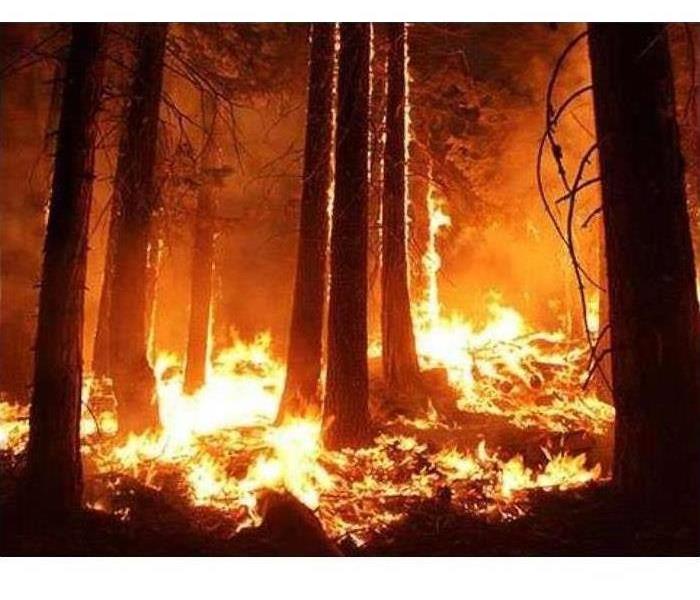 Wildfires can spread quickly! Follow these tips to be sure your next camping trip is a safe one!
Wildfires can spread quickly! Follow these tips to be sure your next camping trip is a safe one!
1. Know the rules
Before you strike a match, make sure you know the fire regulations of the campground or wilderness area in which you are planning to build a fire. Fire rules change, and a campground that allowed campfires the last time you visited may have a temporary ban on them if the risk of wildfires is high. Pay attention to posted signs and check the ranger’s station for current campfire regulations.
2. Use the pit
Most campgrounds provide a fire pit or fire ring in which to build a campfire. If a pit is provided, this is the only place you should build a campfire. If you're in a remote area where campfires are allowed but a pit is not provided, dig a fire pit in an open area away from overhanging branches, power lines or other hazards that could catch on fire. Once the pit has been dug, circle the pit with rocks, ensuring there is a ten-foot area around the pit that is cleared of anything that could catch on fire.
3. Build a safe campfire
Once your pit is in place, build a safe campfire. Start the fire with dried leaves or grass that will easily catch fire. Next, add kindling, small twigs and sticks that are less than an inch in diameter. As the fire builds, add the largest pieces of wood to the fire.
4. Mind the match
Start your campfire with a match and then make sure it is completely extinguished before disposing of it. Pour water over the match or throw it directly into the fire to burn. Never use lighter fluid, gas, kerosene, or other flammable liquids to start a fire.
5. Use local firewood
Though it may not be apparent to the naked eye, tree-killing insects and diseases can live on firewood. If you’re going camping six hours down the road and decide to bring firewood from home you could, without knowing it, transport insects and diseases and inadvertently introduce them into the forests where they weren’t found before.
6. Keep water handy
Don’t start a campfire without having a bucket of water and a shovel nearby. The water can be used to douse any runaway flames and the shovel can be used to throw sand or dirt on any flames that jump the perimeter of your fire ring.
7. Pay attention to the wind
A strong breeze can spread your fire in an instant. To make sure a sudden gust of wind doesn’t turn your campfire into a wildfire, keep anything flammable, including unused firewood, upwind and at least 15 feet away from the fire. The 15-foot rule also goes for your tent and clothing hung to dry.
8. Be careful with kids and pets
It’s not just the risk of forest fires that you need to be mindful of while camping. Campfires are the leading cause of children’s camping injuries in the United States.
9. Never leave a campfire unattended
A campfire should not be left alone, even for one minute. A small breeze can spread fire quickly, so there should be at least one set of eyes monitoring the fire at all times.
10. Put the fire out properly—every time
When you are done with your campfire make sure it is extinguished properly. Dump water on the fire, stir the ashes with a shovel, then dump more water on the fire. The campfire should be cold before you leave it unattended. If it is too hot to touch, then it is too hot to leave.
Is your office energy efficient?
9/18/2020 (Permalink)
- Purchase energy-efficient office equipment. Before you buy or lease office electronics, check to see if they are ENERGYSTAR-rated. An ENERGYSTAR-rated appliance has been evaluated and deemed energy-efficient, which can save you money and help you manage your small business energy costs, especially in the long run.
- Reduce Peak Demand. One of the best ways to save electricity in an office is to reduce your peak demand. The phrase “peak demand” refers to the hours in a day when energy usage is at its highest. Peak demand times are typically normal office hours (9 a.m. to 5 p.m.). You can reduce your demand during this time by staggering work hours / start times, running heavy equipment and factory equipment during the evening and early morning hours, and conserving energy throughout the day.
- Program your thermostats. This is one of those office energy saving tips that is especially relevant for a 9-5 workplace. You don’t need to heat or cool a workplace after everyone has gone home for the night. Even if your team’s hours vary, using programmable or smart thermostats to manage the temperature during “off” hours can make a big difference.
- Turn off lights when not in use. It might seem like a no-brainer, but in a typical office, lights stay on in areas like break rooms, bathrooms, or conference rooms, even when those spaces aren’t being used. Sensor lights can help to keep the lights on when needed, but off when they’re not.
- Use energy-efficient light bulbs. It's one of the easiest and simplest energy saving ideas in the workplace: switch out your regular incandescent bulbs with energy-efficient bulbs such as CFL or LED. This will help you use a significantly less amount of electricity.
- Take advantage of natural sunlight. If you’re fortunate enough to have an office space where there’s abundant natural light, use it! On a sunny day, you might not need to turn on the lights at all in areas where windows can give all the illumination you need. While using passive solar heating might not seem like one of the ways to save energy at work, it really does help. The fewer kilowatt hours of energy you use, the less you have to pay.
- Start running fans. You can reduce your energy usage in the workplace simply and easily by running fans in offices, warehouses, showrooms and kitchens. Fans keep air flowing so your HVAC unit can run more efficiently.
- Power down computers and other office equipment at the end of the day. If computers are not being used through the hours when your staff aren’t working, have your team be in the habit of shutting them down before they leave. Turning off and unplugging as many devices as possible at the end of the day is a simple way to cut back. This includes energy efficient coffee makers, toasters, and similar appliances.
- Prevent “Phantom energy”. Phantom energy is the energy that is still being used by equipment that remains plugged in but not in use. A great office energy-saving tip is to have your computer peripherals (printers, monitors, etc.) connected to power strips (aka “surge protectors”) so that the flip of a single switch can shut down several devices at a time.
- Think outside your building. Are you in control of the landscaping around your business? If so, you have a great opportunity to create energy-savings for your small business with energy efficient landscaping. Strategically planting trees to block winds or provide shade on hot summer days can help reduce your heating and cooling costs.
When Disaster Strikes!
9/2/2020 (Permalink)
Don’t let disasters derail your business!
Whether it is a fire, flood, busted pipes, or faulty wiring, water and fire damage has the potential to take an outsized bite out of your business. Don’t let a little bad luck drag your business down.
With fire or water mishaps, you don’t just need cleanup. You need someone to correctly assess the damage, think through the details, and help you get quick help from your insurance carrier to cover the costs. That’s where our expertise makes the difference.
More than just a clean-up service, SERVPRO of Wayne County is your restoration partner.
Our expert technicians can deploy to your business 24/7, helping you assess the damage accurately, and provide photographic documentation that can be sent to your insurance agency. We have standing relationships with most of the insurance providers in the North Carolina and surrounding areas and understand what kinds of paperwork are required to submit your insurance claim.
Wildfires and what you need to know
9/2/2020 (Permalink)
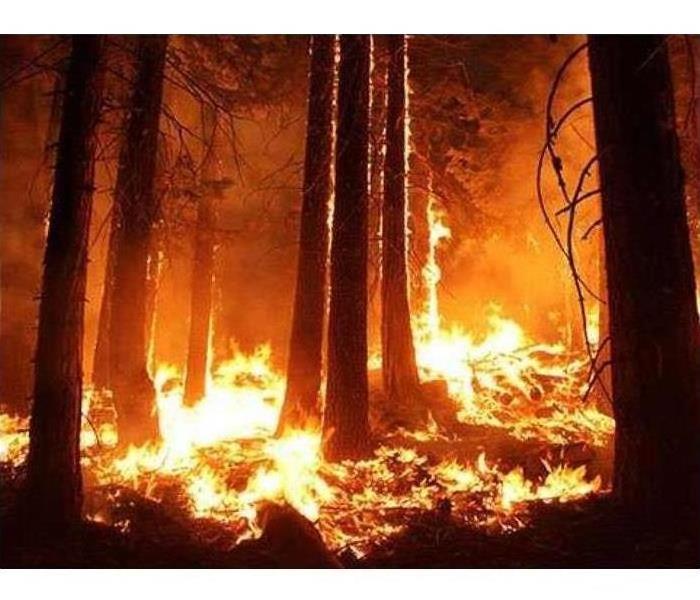
- A wildfire is an uncontrolled fire. Wildfires often occur in wild, unpopulated areas, but they can occur anywhere and harm homes, agriculture, humans, and animals in their path.
- Firefighters also refer to these disasters as surface fires, dependent crown fires, spot fires, and ground fires. Want to make local firefighters happy -- and even better at their jobs? Bake cookies to say thanks!
- 90% of all wildfires are started by humans.
- One of the largest fires in recent history was in 1825 when a fire tore through Maine and New Brunswick, Canada, burning 3 million acres of forest.
- Weather conditions can directly contribute to the occurrence of wildfires through lightning strikes or indirectly by an extended dry spell or drought.
- Wildfires can be caused by an accumulation of dead matter (leaves, twigs, and trees) that can create enough heat in some instances to spontaneously combust and ignite the surrounding area.
- Lightning strikes the earth over 100,000 times a day. 10 to 20% of these lightning strikes can cause fire.
- Manmade combustions from arson, human carelessness, or lack of fire safety cause wildfire disasters every year.
- An average of 1.2 million acres of US woodland burn every year.
- A large wildfire or conflagration is capable of modifying the local weather conditions (AKA producing its own weather).
Preparing for the unexpected
8/29/2020 (Permalink)
Obviously no one wants to have a fire start inside their home but it only takes a split second. Maybe you went to check on your child while the chicken cooked a little longer. Maybe your dog is rambunctious and bumped the table and your candle hit the floor or your electrical wiring is old in your home and something shorts out. No matter the situation you should be as prepared as possible.
Do you have smoke detectors in place? Are the batteries good? Have you tested them lately? Do you have a fire extinguisher? When's the last time it was inspected? Have you heard of a fire blanket? You can throw these over a fire to smoother it and contain the fire. These are just some simple tips to fire safety.
We hope you never have a fire in your home but if you do, SERVPRO of Wayne County will be there to help. Like always, our goal is to make it "Like it never even happened." We are on call 24/7 for your fire emergencies!
Anytime you need our help, call us at 919-751-5353
What is in your air ducts?
8/24/2020 (Permalink)
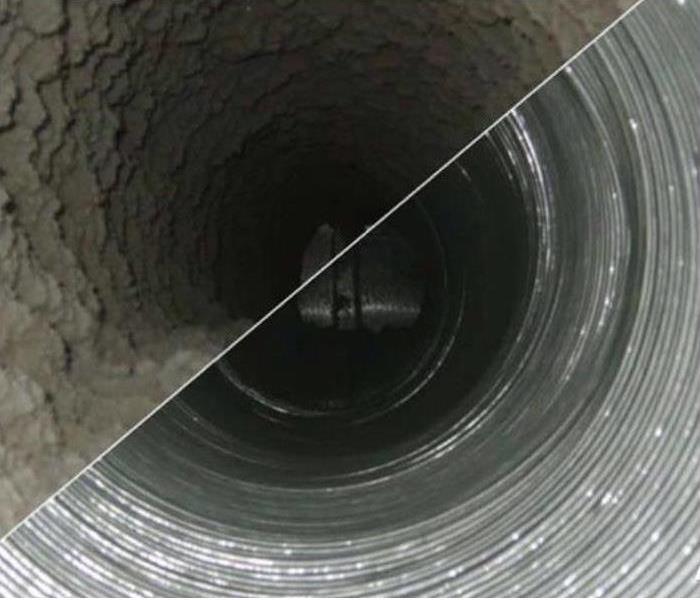
Have you ever stopped to consider the air that circulates inside your home? It travels from your furnace, through your ductwork, into your home’s air, and back through the cold air return system. On its journey, it accumulates all kinds of nasty stuff: dust, hair, allergens, pet dander, mold spores, you name it. If it’s airborne, it will eventually collect in your ductwork. From there, it will get blown out into your home, making a dusty, dirty mess of your indoor air (you know, the stuff you breathe). The Benefits of Professional Air Duct Cleaning Purify Your Indoor Air. Getting rid of all the nasty particulate in your duct-work will help clean up the air inside your home. SERVPRO of Wayne County's comprehensive cleaning system ensures every square inch of your duct-work is thoroughly cleaned, helping you breathe easy in your own home. Reduce Allergies. While the seasons determine the severity of most allergy issues, homes with congested ventilation can cause allergic reactions year round. Contaminants such as dust, mold spores, pet dander and dirt accumulate in your air ducts over time and are blown around into various rooms in your house, preventing the allergy sufferers in your home from ever experiencing total relief. Less Dusting. Getting rid of the dust in your indoor air means less dust on your furniture/pictures/counters/everywhere! Who wouldn’t want to cut down on the tiresome chore of dusting? Improve Furnace Efficiency. Removing the dust, dirt, and debris from your HVAC system will help your furnace run better! Instead of heating the mess inside the vents, the heat generated by the furnace is more easily transferred through the ducts into your home’s air. As any homeowner will tell you, running a furnace is expensive! Don’t make your furnace work any harder than it needs to.
CALL US AT 919-751-5353 and get cleaner, healthier indoor air!
High waters? Turn around, don't drown
8/24/2020 (Permalink)
Each year, more deaths occur due to flooding than from any other thunderstorm related hazard. The Centers for Disease Control and Prevention report that over half of all flood-related drownings occur when a vehicle is driven into hazardous flood water.
The next highest percentage of flood-related deaths is due to walking into or near flood waters. People underestimate the force and power of water. Many of the deaths occur in automobiles as they are swept downstream. Of these drownings, many are preventable, but too many people continue to drive around the barriers that warn you the road is flooded. A mere 6 inches of fast-moving flood water can knock over an adult. It takes just 12 inches of rushing water to carry away a small car, while 2 feet of rushing water can carry away most vehicles. It is NEVER safe to drive or walk into flood waters.
Content Restoration
8/19/2020 (Permalink)
After a disaster, precious belongings and critical documents may be damaged. Determining what is possible to salvage is a critical and delicate process.
Our production team determines if the affected contents are restorable or non restorable. Our immediate focus is to mitigate affected items from further damage and to create a detailed inventory of items that are deemed non restorable. Some items are extremely sentimental to clients and others are confidential, invaluable or replaceable. Careful consideration is given when our team works with your contents because we know just how important they are to you.
If conditions are hazardous and not suitable for onsite cleaning or security concerns exist, a pack-out may be necessary. Our staff takes great care of all valuables, carefully inventorying and packing contents and then transporting them to our own professional and secure facility. They are then unpacked, cleaned, deodorized and inspected with impressive attention to detail.
Specific processes may be necessary to dry or eliminate odor in contents. For odor holding contents, items are placed on mobile racks and set into a deodorization chamber where ozone is introduced, breaking down all organic particles often associated with odor.
If you have any questions about content restoration, we will be happy to help!
When Disaster Strikes!
8/19/2020 (Permalink)
When business owners visualize water damage, they often picture a massive storm wiping out power lines, flooding offices, and shutting down businesses for days at a time. It is true that commercial water damage is often the result of floods and water that stems from weather events and storms.
However, many entrepreneurs and business space renters forget that storms and severe weather aren't the only causes of floods and water damage. Here are some of the typical causes of water damage to commercial buildings.
1. Outdated Sprinkler Systems
Some older office and retail buildings still have outdated sprinkler systems that work in conjunction with fire protection systems. While such sprinklers can come in handy during a fire emergency, they can also cause commercial flood damage if they are faulty or in need of replacement. This could easily damage inventory and business assets.
2. Damaged Appliances and Equipment
This cause of commercial flood damage is more common in restaurants and catering facilities, as well as any business that has appliances and equipment that make use of water. If the appliance fails and sends water across your building, especially during late hours when no one is around, you may come back to work and face a water emergency.
3. Busted Pipes and Plumbing
Just like in a residence, if the plumbing system in your workplace fails water damage could be the result.
4. Backed Up Sewer Lines
This is another cause of commercial water damage that often catches business owners by surprise. Should the sewer line to your building back up or become damaged, realize the potential dangers of contaminated Black Water which can cause health effects and ruin products and office furnishings.
If your business has suffered commercial water damage, SERVPRO of Wayne County will get you back up and running again. Call us anytime 24/7 at (919)751-5353
What you need to know about smoke and soot
7/19/2020 (Permalink)
Smoke and soot is very invasive and can penetrate various cavities within your home, causing hidden damage and odor. Our smoke damage expertise and experience allows us to inspect and accurately assess the extent of the damage to develop a comprehensive plan of action.
Smoke and soot facts:
- Hot smoke migrates to cooler areas and upper levels of a structure.
- Smoke flows around plumbing systems, seeping through the holes used by pipes to go from floor to floor.
- The type of smoke may greatly affect the restoration process.
Different Types of Smoke
There are two different types of smoke–wet and dry. As a result, there are different types of soot residue after a fire. Before restoration begins, SERVPRO of Wayne County will test the soot to determine which type of smoke damage occurred. The cleaning procedures will then be based on the information identified during pretesting. Here is some additional information:
Wet Smoke – Plastic and Rubber
- Low heat, smoldering, pungent odor, sticky, smeary. Smoke webs are more difficult to clean.
Dry Smoke – Paper and Wood
- Fast burning, high temperatures, heat rises therefore smoke rises.
Protein Fire Residue – Produced by evaporation of material rather than from a fire
- Virtually invisible, discolors paints and varnishes, extreme pungent odor.
Our Fire Damage Restoration Services
Since each smoke and fire damage situation is a little different, each one requires a unique solution tailored for the specific conditions. We have the equipment, expertise, and experience to restore your fire and smoke damage. We will also treat your family with empathy and respect and your property with care.
Have Questions about Fire, Smoke, or Soot Damage?
Call Us Today – (919)751-5353
We are the Cleaning Experts
6/8/2020 (Permalink)
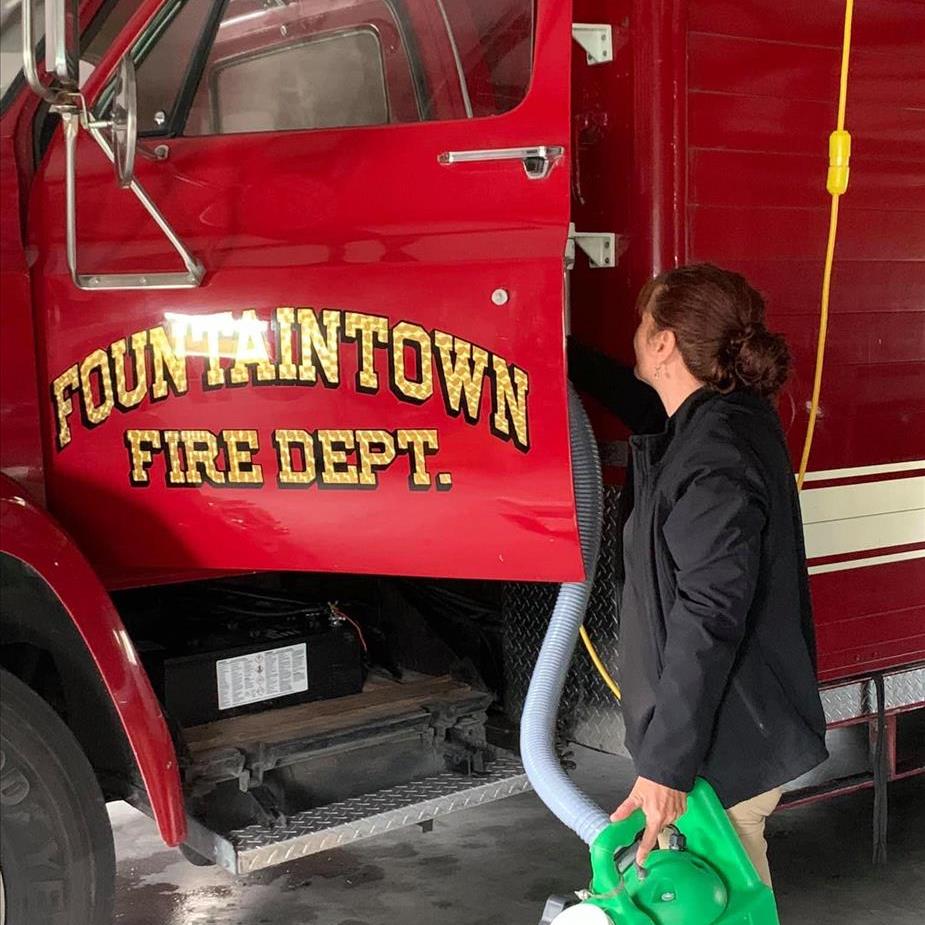 Diane Jones, one of our certified cleaning technicians is shown here sanitizing fire equipment.
Diane Jones, one of our certified cleaning technicians is shown here sanitizing fire equipment.
During this unprecedented time caused by the global pandemic of coronavirus, this is a reminder to our customers that we are specialists in cleaning services, and we adhere to the highest cleaning and sanitation standards.
Specialized Training
We are prepared to clean and disinfect your home or business, according to protocols set forth by the Centers for Disease Control and Prevention. We have years of experience in dealing with biological contaminants, and we will go beyond the scope of work that regular janitorial staff perform on a daily basis.
The CDC encourages cleaning of high-touch surfaces such as counters, tabletops, doorknobs, light switches, bathroom fixtures, toilets, phones, keyboards, tablets and tables. Other spaces mentioned in the CDC’s guidance for commercial spaces include:
- Kitchen/Food Areas
- Bathrooms
- Schools/Classrooms
- Offices
- Retail Spaces
- Water Fountains
- Shelving/Racks
- Sales Counters
- Carpets and Rugs
- Stair Handrails
- Elevator Cars
- Playground Equipment
- Fitness Equipment
Specialized Products
The CDC recommends usage of a labeled hospital-grade disinfectant with claims against similar pathogens to the coronavirus. Multiple products in the SERVPRO product line carry the EPA-approved emerging pathogens claims. While there is currently no product tested against this particular strain of the coronavirus, we are following all guidelines as provided by the CDC and local authorities.
Call Today for a Proactive Cleaning
If your home or business needs deep cleaning services, call the experts today – 252-208-7888
We are a IICRC Certified firm and what that means
3/4/2020 (Permalink)
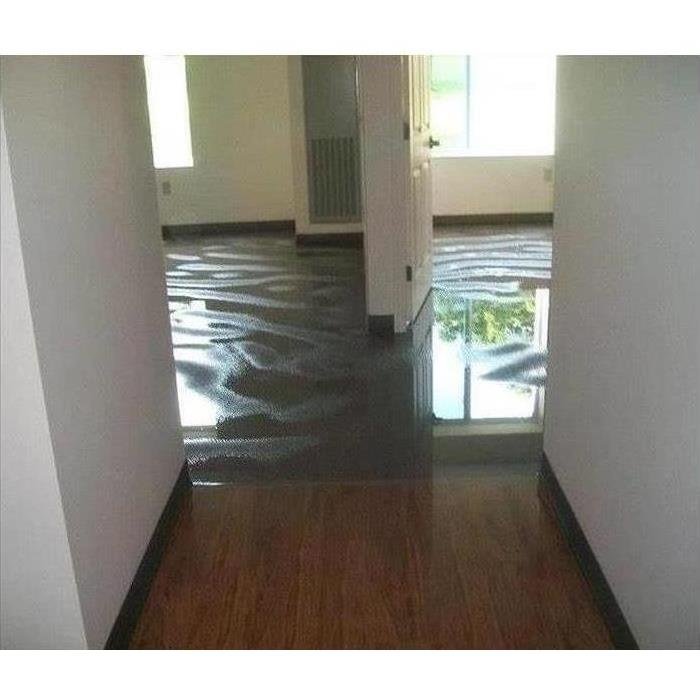
SERVPRO of Wayne County is an IICRC firm. The Institute of Inspection, Cleaning and Restoration Certification (IICRC) creates the standards for the restoration industry and provides training and certification to restoration companies. IICRC Certified Firms have the right to display the IICRC Certified Logo.
IICRC Certified Firms must:
• Present accurate information to consumers and conduct business with honesty and integrity.
• Require a technician on all jobs who has been formally trained and passed all required tests.
• Require a continuing education program to keep technicians up-to-date on the latest changes in the industry.
• Maintain liability insurance to protect all parties in the event of an accident.
• Maintain a written complaint policy and agree to Better Business Bureau or similar arbitration to resolve disputes, and accept the conclusions and recommendations of arbitration.
The IICRC Develops The Standards For The Restoration Industry
The IICRC has been the driving force in establishing the main industry standards and reference guides for professional carpet cleaning, water damage restoration and mold remediation. These IICRC standards take years to develop and require the coordination of experts in the field: manufacturers, industry organizations, insurance professionals, training schools, contractors, and public health professionals.
Every five years, the standards are reviewed and updated. The water damage restoration field changes rapidly with advancements in technology and science, and therefore the standards must evolve to keep pace.
Water damage and your business
6/2/2019 (Permalink)
When business owners visualize water damage, they often picture a massive storm wiping out power lines, flooding offices, and shutting down businesses for days at a time. It is true that commercial water damage is often the result of floods and water that stems from weather events and storms.
However, many entrepreneurs and business space renters forget that storms and severe weather aren't the only causes of floods and water damage. Here are some of the typical causes of water damage to commercial buildings.
1. Outdated Sprinkler Systems
Some older office and retail buildings still have outdated sprinkler systems that work in conjunction with fire protection systems. While such sprinklers can come in handy during a fire emergency, they can also cause commercial flood damage if they are faulty or in need of replacement. This could easily damage inventory and business assets.
2. Damaged Appliances and Equipment
This cause of commercial flood damage is more common in restaurants and catering facilities, as well as any business that has appliances and equipment that make use of water. If the appliance fails and sends water across your building, especially during late hours when no one is around, you may come back to work and face a water emergency.
3. Busted Pipes and Plumbing
Just like in a residence, if the plumbing system in your workplace fails water damage could be the result.
4. Backed Up Sewer Lines
This is another cause of commercial water damage that often catches business owners by surprise. Should the sewer line to your building back up or become damaged, realize the potential dangers of contaminated Black Water which can cause health effects and ruin products and office furnishings.
If your business has suffered commercial water damage, SERVPRO of Wayne County and we'll get you back up and running again. Call us anytime 24/7 at (919)751-5353
Commercial Buildings? We handle that too!
5/21/2019 (Permalink)
When commercial property has been damaged, time is of the essence. The professionals at SERVPRO of Wayne County understand the importance of getting to the site of the damage, quickly assessing the situation, and then getting the big gear down there to stop the spread of damage, contain the work area, and get to fixing things up quickly and efficiently so you can get back to profitable work as quickly as possible.
What Can We Handle?
Our company can tackle a wide array of various challenges. No matter what the situation, we have experienced and well-trained specialists on hand to tackle every aspect of repair.
- Asbestos removal
- Repairing fire and smoke damage
- Water damage
- Mold remediation
- Environmental cleanup
- Full reconstruction
We have the tools, the skills, the experience, the dedication, and the training to get the job done. There are many different challenges when it comes to restoring your commercial building, and that’s all the more reason you shouldn’t rely on just anyone. You need professionals who know how to handle these types of work environments and are committed to providing you with the absolute best service each and every time.
We Can Take Care Of Your Business Buildings!
Our trained staff can handle a wide array of damage restoration work, for any type of building or business. We have served restaurants, factories, medical centers, retail stores, office buildings and more. We give a full analysis to you of the damages and what actions might have to be taken for a full restoration.
Commercial restoration work is just what we do. We’ve been in this business for years and have seen every type of job site imaginable.
Call the professionals at SERVPRO of Wayne County at 919-751-5353 to see what old school work ethic looks like, and rest easy knowing we can make it "Like it never even happened."
Protect your pets!!
5/18/2019 (Permalink)
Picture this: You are not at home. A fire breaks out in your home. Your pets are there all alone. Just the thought of such a story horrifies me. Unfortunately, it is not an uncommon possibility. Recent data from the National Fire Protection Association indicates that 500,000 pets a year are affected by house fires.
Annually, pets are responsible for starting 1,000 house fires.
Prevention is a Priority
- Extinguish open flames — Like moths drawn to light, pets tend to be curious about flames and will be attracted to candles, lanterns, stoves and open fires like the fireplace or BBQ. To avoid problems make sure all sources of fire are completely extinguished and do not pose a threat.
- Remove or protect stove knobs — Pets accidentally turning on stove knobs is the leading reason for pet started house fires, according to the National Fire Protection Association. Remove or protect stove knobs from activation while you are away.
- Flameless candles — Although not as aromatic as regular candles, the light bulbs in flameless candles are unlikely to start a fire if knocked over by your pet.
- Inspect and pet proof — Be alert to loose electrical wires, appliances, and other hazards within your pet’s reach.
High Waters? Turn Around-Don't Drown
5/13/2019 (Permalink)
Each year, more deaths occur due to flooding than from any other thunderstorm related hazard. The Centers for Disease Control and Prevention report that over half of all flood-related drownings occur when a vehicle is driven into hazardous flood water.
The next highest percentage of flood-related deaths is due to walking into or near flood waters. People underestimate the force and power of water. Many of the deaths occur in automobiles as they are swept downstream. Of these drownings, many are preventable, but too many people continue to drive around the barriers that warn you the road is flooded. A mere 6 inches of fast-moving flood water can knock over an adult. It takes just 12 inches of rushing water to carry away a small car, while 2 feet of rushing water can carry away most vehicles. It is NEVER safe to drive or walk into flood waters.
IICRC Certified Contractors-What is the advantage?
5/13/2019 (Permalink)
With most home improvements costing significant time and money, it’s essential that you hire a reliable contractor for the job. This ensures that the work will be done in a timely and efficient manner. While it might seem difficult, looking for an upstanding contractor is actually easier than you think. Just check for certifications from trusted organizations in the industry.
One of our notable certifications includes the ANSI/IICRC (Institute of Inspection, Cleaning and Restoration Certification) S500 Water Damage Restoration certificate. This provides a specific set of practical standards for water damage restoration. From the initial inspection to mold remediation, we’ll deal with the issues involved with water damage though our quality materials and highly trained team.
Here’s more on how hiring an IICRC-certified contractor like SERVPRO of Wayne County can benefit you:
- Peace of Mind — You can be sure that we’ll present you with accurate information while conducting business with honesty and integrity. We maintain a liability insurance to protect you and your investment in the event that an accident occurs in your property.
- Expertise — No matter the job you can count on us to do a superior job. As an IICRC-certified contractor, our team is formally trained and passes all the required tests.
- Up-to-Date — An IICRC-certified contractor participates in a continuing education program to keep up with the latest changes in the industry.
- Client Satisfaction — We remain complaint-free from the Better Business Bureau, but we still maintain a written complaint policy and comply with the Bureau in resolving disputes, as IICRC dictates.
Thinking of making a charitable donation? Read this first.
5/1/2019 (Permalink)
As a business owner, you are always being solicited for donations. Here at SERVPRO of Wayne County we are giving a few tips to avoid being scammed when giving donations to charitable organizations.
1. Do not donate through your email account. Scammers can send phishing emails to get your credit card number, debit card number or other personal information.
2. Never donate money in cash. The best way is to pay by check or credit card so you will have access to a history of your transactions. Be cautious of any charities asking for cash donations or to wire them money because you will have no record of the transaction and no way to get back to you if it is a scam.
3. Pay attention to email solicitations. Be cautious of emails that say they have pictures of disaster locations that are email attachments. Those emails could contain viruses, so only open attachments only if you know who the sender is.
4. Pay attention to website addresses. The most reliable charities will end in .org instead of .com. Another red flag is that legitimate charities do not normally solicit donations through money transfer services.
We at SERVPRO of Wayne County want you to understand these valuable tips so your donations get to those who are in desperate need of them.
Addressing Mold in Leases and Purchases of Commercial Buildings
5/1/2019 (Permalink)
Given the increased attention to toxic mold, owners & tenants of commercial buildings and their attorneys are starting to address mold prevention and remediation directly in leases and purchase agreements. And, due to the current lack of scientific knowledge and regulatory uncertainty, the focus should be on risk assessment and prevention of mold problems.
Tenants and purchasers considering a transaction should have an assessment for toxic mold performed by a competent consultant with experience in industrial hygiene, mold sampling and mold remediation. This protocol should become part of their due diligence process. An assessment of indoor air quality for the presence of toxic molds will establish baseline conditions and, if necessary, allow the parties to correct a pre-existing mold problem.
Practices and customs for assessing toxic mold risk and indoor air quality are still developing. Some building owners may develop protocols for regular testing and may provide results to prospective tenants or purchasers. However, most retailers contemplating a lease or purchase transaction will likely have to request permission to perform a toxic mold assessment.
Can mold return after remediation?
5/1/2019 (Permalink)
To be blunt, yes! After obtaining mold remediation services from a certified specialist, along with determining the actual cause of the infestation, the mold problems are usually taken care of. Despite that, it is still possible for mold to return at a later time. The reason usually comes from an underlying moisture problem.
So, why does mold come back after being treated? Mold is a fungus. It contains living organisms that, in order to live, have to breakdown moist, rotting organic matter to survive. Without fungi and other decomposing organisms, dead debris from scraps, leaves, etc. would just simply continue to pile up. In wooded areas, it’s a good thing when mold breaks down wet, rotting wood. In our homes and buildings however, it’s a extremely bad thing.
Mold reproduces by way of microscopic spores, which are almost always present in the air we breathe on a daily basis. Even if your indoor air quality is excellent there are still trace amounts of mold spores present. It’s all but unpreventable. In small masses, fungal spores don’t generally cause any harmful health effects. The last mentioned tends to occur when large amounts of mold are growing nearby, releasing large quantities of spores into the air.
If there’s moisture, especially wet and rotting wood, carpeting, or drywall, it creates the right habitat for molds to begin to grow. Moisture is almost always at the root of mold infiltrations. If the underlying moisture problem isn’t resolved properly during the mold remediation process, the mold problem could very likely recur in the near future.
We here at SERVPRO of Wayne County use highly trained technicians to try and make sure this isn’t the situation at your home or building.
Call us at 919-751-5353 for your mold infestation problems.
When Water Damage Occurs At Your Business
5/14/2018 (Permalink)
 Pictured is some of commercial equipment used in large loss. We can help if the need arises call us at 919-751-5353!
Pictured is some of commercial equipment used in large loss. We can help if the need arises call us at 919-751-5353!
When business owners visualize water damage, they often picture a massive storm wiping out power lines, flooding offices, and shutting down businesses for days at a time. It is true that commercial water damage is often the result of floods and water that stems from weather events and storms.
However, many entrepreneurs and business space renters forget that storms and severe weather aren't the only causes of floods and water damage. Here are some of the typical causes of water damage to commercial buildings.
1. Outdated Sprinkler Systems
Some older office and retail buildings still have outdated sprinkler systems that work in conjunction with fire protection systems. While such sprinklers can come in handy during a fire emergency, they can also cause commercial flood damage if they are faulty or in need of replacement. This could easily damage inventory and business assets.
2. Damaged Appliances and Equipment
This cause of commercial flood damage is more common in restaurants and catering facilities, as well as any business that has appliances and equipment that make use of water. If the appliance fails and sends water across your building, especially during late hours when no one is around, you may come back to work and face a water emergency.
3. Busted Pipes and Plumbing
Just like in a residence, if the plumbing system in your workplace fails water damage could be the result.
4. Backed Up Sewer Lines
This is another cause of commercial water damage that often catches business owners by surprise. Should the sewer line to your building back up or become damaged, realize the potential dangers of contaminated Black Water which can cause health effects and ruin products and office furnishings.
If your business has suffered commercial water damage, SERVPRO of Wayne County and we'll get you back up and running again. Call us anytime 24/7 at (919)751-5353
Winter Storm Readiness
5/9/2018 (Permalink)
During any winter storm it is imperative to know the differences between watches and warnings in order to properly prepare or take the appropriate actions and stay safe.
Before any sort of wintry weather, a winter storm survival kit should be kept in a secure place in case of emergency. These kits should contain everything from blankets to flashlights with extra batteries, non-perishable food, waterproof matches, a shovel and windshield scraper, a tool kit, jumper cables, a water container, road maps and flares.
To stay safe during this winter storm situation it is important that the necessary precautions are taken prior to the storm's arrival. See the lists below to make sure your adequately prepared.
At Home or Work:
1. Working flashlight 2. A charged cell phone 3. Battery powered radio or television 4. Extra food, water and medicine 5. First Aid Supplies 6. Heating fuel (or turn up the heat prior to the storm if your house uses electrical heat) 7. Emergency heating source 8. Fire extinguishers 9. Carbon monoxide and smoke detectors In a Vehicle:
1. Full or near full gas tank 2. Let a friend or relative know your predicted arrival time 3. A charged cell phone 4. Extra food and water 5. Extra gasoline for emergency fuel These are just some helpful tips to keep in mind when preparing for the storm. You can never be too prepared!
The 5 Most Common Types of Household Mold
5/8/2018 (Permalink)
 Contact us today for Mold Abatement at 919-751-5353!
Contact us today for Mold Abatement at 919-751-5353!
The following is a list of the top five most common household mold growths:
- Penicillium is the most common type of mold found in homes; it is blue or green in color and fuzzy in texture. This mold is used to make penicillin in a laboratory setting, which should warn you of its potency. Penicillium is often found in walls, wallpaper, wet carpets, and old furniture.
- Alternaria is an outdoor allergen primarily found outdoors in soil and plants, but it enters homes through open windows and doors. It looks like black spots on leaves or vegetables.
- Aspergillus is often found in heating and air conditioning systems.
- Cladosporium is a leaf mold which is commonly found under bathrooms sinks and around the ceilings and walls of bathtubs and showers, as a result of all of the steam from the shower. The color is olive green/black.
- Stachybotrys is a toxic black mold that is greenish black in color and slimy or powdery in texture. It grows in moist areas such as leaking pipes.
Your home may have mold growth even if you don’t notice it. Call SERVPRO of Wayne County to remove hazardous mold in your home!
Do's and Dont's When Dealing With Mold
4/25/2018 (Permalink)
Mold occurs naturally in our environment and plays an important role in our ecosystem, but it can be toxic and allergenic so it should be respected. Below are some tips if you find mold in your home:
- DO NOT place fans on mold thinking it will go away. When you blow air onto a mold infested area it will disperse tiny spores into the air spreading the problem to a larger area.
- DO NOT merely try to kill the mold. Dead mold spores can be just as harmful to humans as living mold spores.
- DO NOT spray bleach or any other chemical on the mold and assume the problem is solved. Bleach and other chemicals may kill mold but it still needs to be safely removed.
- DO NOT assume you are immune from the effects of mold. Some people are immediately affected and some notice little or no short term effect. Long term exposure is linked to several serious health issues.
- DO wear a respirator with P100 hepa filtration cartridges.
- DO wear gloves.
- DO put up containment with plastic sheeting to avoid the spread of spores.
- DO use a hepa vacuum.
- DO have negative air pressure.
- DO call a certified mold professional if visible signs of mold cover more than 10 square feet
Are You Being Affected By Mold?
4/25/2018 (Permalink)
Some people are sensitive to molds. For these people, exposure to molds can lead to symptoms such as stuffy nose, wheezing, and red or itchy eyes, or skin. Some people, such as those with allergies to molds or with asthma, may have more intense reactions. Severe reactions may occur among workers exposed to large amounts of molds in occupational settings, such as farmers working around moldy hay. Severe reactions may include fever and shortness of breath.
People with a weakened immune system, such as people receiving treatment for cancer, people who have had an organ or stem cell transplant, and people taking medicines that suppress the immune system, are more likely to get mold infections.
Exposure to mold or dampness may also lead to development of asthma in some individuals. Interventions that improve housing conditions can reduce morbidity from asthma and respiratory allergies.
Mold---How To Prevent It
4/24/2018 (Permalink)
 When your #1 priority is keeping your family safe!
When your #1 priority is keeping your family safe!
Yes, mold can be good — it's essential in making brie and penicillin, for example, and necessary for the decomposition of organic matter in nature — but it can also be very, very bad, especially when it grows undetected in your home.
Mold spores spread easily and cannot be completely eradicated.Mold can grow anywhere: on carpet, clothing, food, paper, and even in places you can't see, such as the backside of drywall, areas inside walls around leaking or condensing pipes, and above ceiling tiles.
Not only is a mold problem difficult and costly to fix, but mold can also produce allergens and irritants (and, rarely, toxins) that may compromise your health.
So what can you do if you're concerned about mold growing in your home?
The best approach is preventing mold before it becomes a problem. The key to mold prevention is simple: moisture control.
7 Unusual Home Security Tips
10/16/2017 (Permalink)
The best way to prepare for a burglary is to prevent it from happening. Here are some unusual methods to help keep you and your family safe-
1. Use dowel rods in sliding glass door tracks. If a burglar manages to get the sliding door unlocked, this will prevent them from sliding it open.
2. Move your alarm key pad to an unusual place. Most homeowners have them by the front or back door because it's convenient. However, potential burglars can look in and see if it's alarmed or not. By moving it to an unusual place, it can trick the potential burglar in thinking you do not have one.
3. Use as key lock box. Most homeowners leave a spare key in common places. By using a lock box, your spare set is just a quick combination away and is protected.
4. Don't take Mother Nature for granted. Use thorny bushes as a home defense system. By planting them under windows, it would make it difficult for someone to crawl through them safely.
5. Don't hide valueables in the master bedroom. That is the first place to look! Move your valuables to another room like a child's room where someone would not think to look.
6. Get a decoy safe. Buy a small decoy safe. They will be more likely to run off with a decoy safe full of fake valuables than to continue looking.
7. Keep your car keys with you. Most key fobs have a panic button. If you hear or see someone trying to break in, hit the panic button. The last thing a burglar wants is to rob a noisy house. Most likely they will discontinue their efforts
Fire Prevention Week
10/9/2017 (Permalink)
October 8-14 is Fire Prevention Week. This year's theme is Every Second Counts-Plan Two Ways Out!
In the event of a fire, you only have a matter of seconds to react. Having a plan with your family will make a difference.
1. Have two escape routes planned and practice them regularly with your family. Remind your family in the event of heavy smoke to GET LOW AND GO!
2. Have a designated meeting place and be sure each family member knows where to go.
3. Once you get out-STAY OUT! Remind your children's to NEVER go back in for anything.
Our SERVPRO family wants you to stay safe and informed. For more safety tips and practices visit www.firepreventionweek.org
Trending-Bold Colors on Kitchen Cabinets
10/9/2017 (Permalink)
Homeowners craving a burst of color have generally been told to bring it through with easily changeable seat cushions or curtains. However, home design TV shows and blogs are changing that by showing colorful, painted kitchen cabinets that look like a commitment worth making.
Neutral cabinets, especially white, remain a safe and popular bet. But, designers say homeowners who are drawn to bold colors and use them thoughtfully often end up happy with the end results.
Thinking of changing up your cabinets? Keep in mind that while older cabinets made from solid wood can be sanded and painted successfully, the results are often different with cheaper ones. To be sure, use a test spot and see how it turns out before updating the entire set of cabinets.
All TREATS No TRICKS-Halloween Safety Tips
10/9/2017 (Permalink)
Remind your little ghouls, goblins, super heroes and princesses of these safety tips to help keep Trick or Treating SAFE and FUN-
- Never go trick or treating alone. Be sure to have a parent or group with you.
- Plan and review your route ahead of time
- Never go inside of a stranger's home even if you are invited. Only accept treats at the door.
- Wear a reflective costume or carry a flashlight.
- Stay on sidewalks and walkways
- Be very cautious of strangers on the sidewalks and in the street
- Only go to houses with the porch light on
- Never run across the street-cross only at corners or crosswalks
- Watch out for cars backing out of driveways
- Be sure to secure any loose clothing to prevent trips and falls.
Coping with Pet Loss
8/9/2017 (Permalink)
Loosing a pet is not an easy thing, but it can be therapeutic to honor them by spreading a little joy---just as your pet did for you. Consider doing these simple things to channel your grief.
- Donate food bags of your pets uneaten food and treats to your local animal shelter. Shelters always need food, so by donating your leftovers, you will help a needy animal and prevent waste.
- Give to a charity. Give money, volunteer to walk dogs, foster animals or spread the word on social media about rescue efforts. Most charities related to animal rescues will take donations in your pets honor.
- Adopt. After some time passes, it may provide comfort to bring home another pet. Because pets instinctively respond to your needs, they wont be turned off by how introverted you are during this difficult time. Instead, they will gravitate closer to you as they offer unconditional love.


 24/7 Emergency Service
24/7 Emergency Service





